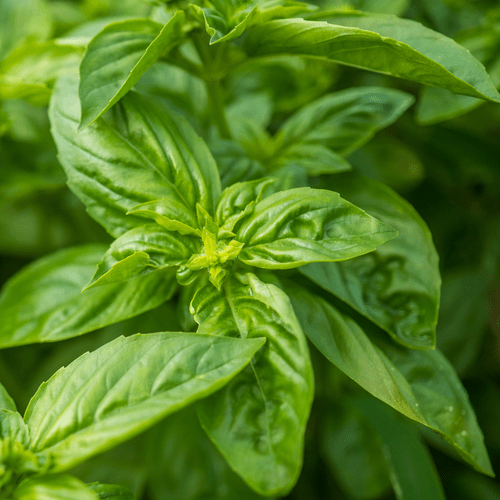Most Americans can't identify tarragon or separate fresh-cut basil from thyme, but herbs are spreading fast across the continent, turning up in salads and omelets, simmering in teas and potions, and even occupying a prominent place in the medicine cabinet.
Twenty years ago a shopper would have been hard pressed to find fresh dill or marjoram at the local supermarket; today, nearly three-quarters of those same stores seasonally stock fresh dill and marjoram along with fresh chives, ginger, garlic, oregano, sage, sorrel, rosemary and other herbs.
An herbal renaissance is taking place in American kitchens and gardens, bringing strong scents and fervent flavors back to places where they've been missing for several generations.
Not since the American Revolution, more than two centuries ago, has there been so much interest in and growth of herbs on this continent.
Thomas Jefferson, like other 18th century Americans, grew more than two dozen different herbs in his kitchen garden. His crop not only spiced family meals, but helped cure wounds, settle troubled tummies, freshen stale rooms and moisturize chapped skin. Herbs were integral to daily life.
Herbs have, in fact, been cultivated by almost every human culture since the dawn of civilization. Some herbs were considered sacred and used only in special ceremonies; others exhibited medicinal properties. Elaborate ceremonies have accompanied the cultivation, harvest and use of many herbs.
Ironically, the age of reason and science that Jefferson helped usher into the Western world also tried to debunk all herbalists and prove the use of herbs equivalent to buying and drinking snake oil. The scientific method led to microwave ovens and powerful synthetic drugs and lunar landings, but it robbed America of much of its folk wisdom and flavor.
Only recently has science affirmed many of the old folk remedies, giving credit to garlic as a cold remedy, for instance, or to savory as a salve for insect bites and to chamomile as a sedative.
And in this land once dominated by meat-and-potatoes cuisine, where "home-cooked" meals were often made from canned soups, frozen vegetables and TV dinners, restaurant chefs and home cooks alike are looking for and demanding more fresh-cut herbs and locally grown produce.
Increasing numbers of consumers are choosing natural foods and beverages that contain herbs, and there is a growing demand for herbal medicines like St. John's Wort and Echinaccea.
For the wheat farmer trying to get by on $2.50 a bushel or the potato grower troubled by overproduction, there could be a wake-up call here. While thousands of growers worldwide are competing for a slice of the soybean market, only a handful are struggling to meet the rising demand for Echinacea.
This is one instance where the small acreage farmer or the grower cultivating leased ground has an advantage, given an average lower overhead and smaller debt service than the bigger grower. The smaller operation is often in better shape to experiment with new crops, explore new markets and try different varieties.
Like canola and ginseng, the most profitable crops of the future are likely to come from plants we can't identify and made into products we can't imagine. What if goldenseal becomes an accepted cure for the common cold? Or does gingko really enhance memory? What if Emeril LaGasse starts a run on fennel?
If this trend continues, the produce markets of the next century -- whatever their specific changes may be -- are certainly going to be more diverse and flavorful.
